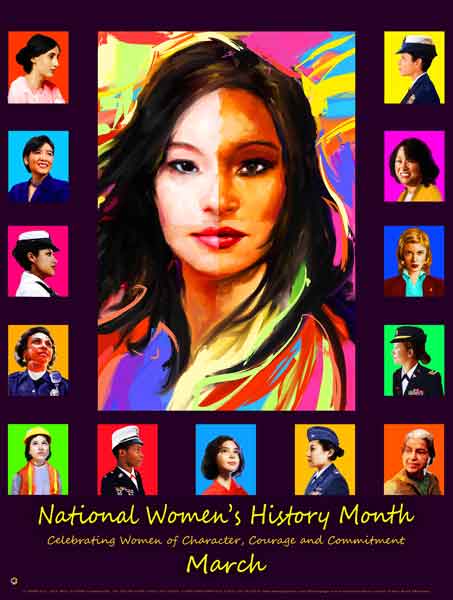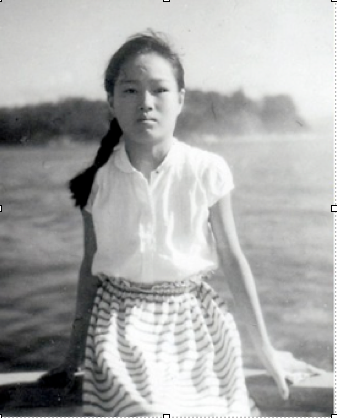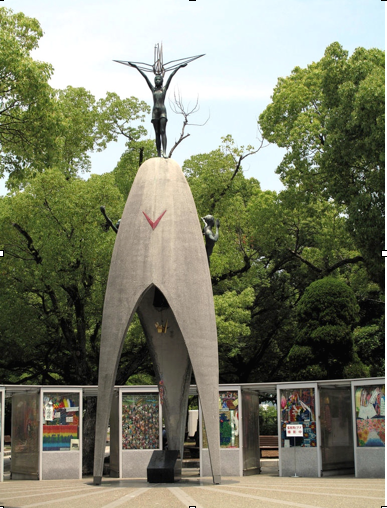Library Honors Women's History Month with Poster Commemorating Sadako Sasaki and her Thousand Paper Cranes
Editors Note: When Julia, announced the theme of this year's Women's History Month poster going up in the library, women of "Character, Courage, and Commitment", and the three women she selected to represent these traits, Mother Teresa for Character, Marie Curie for Commitment and Sadako Sasaki for Courage, we asked her to tell us more about Sadako Sasaki. While most people are familiar Mother Teresa and Marie Curie, Sadako Sasaki isn't as well known and is particularly close to Julia's heart.
by Julia Strimer
March is Women's History Month.
National Women's History Month's roots go back to March 8, 1857, when women from New York City factories staged a protest over working conditions. International Women's Day (March 8) was first observed in 1909, but it wasn't until 1981 that Congress established National Women's History Week to be commemorated the second week of March. In 1987, Congress expanded the week to a month.
The National Women's History Project has been instrumental in celebrating the month; this year's theme is Celebrating Women of Character, Courage, and Commitment. For the Manchester District Library poster display, Mother Teresa has been chosen for "Character", Marie Curie for "Commitment", and Sadako Sasaki for "Courage".
Sadako is best known in connection to the story of the "Thousand Paper Cranes". An ancient Japanese legend promises that anyone who folds a thousand origami cranes will be granted a wish by a crane. The crane in Japan is one of the mystical or holy creatures and is said to live for a thousand years: That is why 1,000 cranes are made.
Sadako was two years old when the bomb fell on Hiroshima, just a mile from her home. She and her family survived, but she developed leukemia. Her mother wrote, “She believed in a saying, that if you fold a thousand cranes, you’d get over your sickness. She folded paper cranes carefully, one by one, using a piece of paper of advertisement, medicine and wrapping." However, Sadako died on the morning of October 25, 1955, surrounded by her family. Most of her cranes were buried with her.
Sadako’s short life has also inspired another sort of legacy: the Children’s Peace Monument in Hiroshima. After Sadako’s death, her classmates sought to honor their friend by creating “a monument to mourn all the children who died from the atomic bombing.” With support from more than 3,100 schools around the world, the students created a nine-meter high bronze statue, topped with a figure of a girl holding a folded crane.
The Sadako Legacy Foundation of Japan donated one of Sadako’s cranes to the National Park Service in 2012; it is on exhibit at the Pearl Harbor Visitor Center. Among the five remaining cranes that Sadako folded, one was donated and is on exhibit at the 9/11 Tribute Center.
Stop in at the library to see the Women's History Month display and check out books about the three women honored.













You must be logged in to post a comment Login